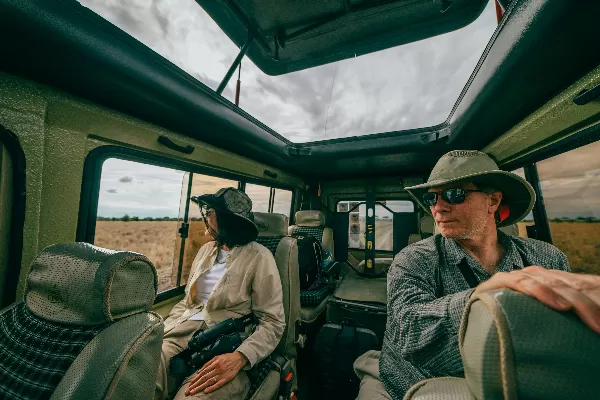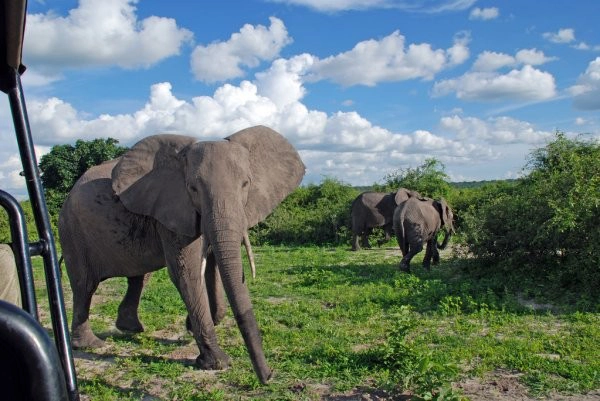🦁 Best Time to Visit Tanzania for Safari Tour 2025 – Complete Guide
Discover the ideal months for a Tanzania safari, the best national parks to visit, and expert tips for an unforgettable wildlife experience.
Are you wondering when is the best time to visit Tanzania for a safari? Our 2025 guide provides insights on the optimal wildlife viewing seasons, climate conditions, and park accessibility. Understanding the best time to go is crucial for an unforgettable safari adventure.

Tanzania offers year-round safaris, but the Great Migration, Big Five sightings, and birdwatching seasons vary. Learn about the best months for Serengeti, Ngorongoro, Tarangire, and Selous, plus what to expect in each season.

Best Months for a Safari: The dry season (June-October) offers prime wildlife viewing, while the green season (November-May) provides lush landscapes and excellent birdwatching opportunities. Each season brings a different experience for wildlife enthusiasts, photographers, and nature lovers.
Why Choosing the Right Safari Season Matters?
- Wildlife Viewing: The dry season offers the best game viewing as animals gather around waterholes, making it easier to spot them.
- Great Migration: Witness over 1.5 million wildebeests crossing the Serengeti between June and October, a once-in-a-lifetime spectacle.
- Birdwatching: The wet season (November-April) is perfect for spotting migratory birds that flock to Tanzania’s parks.
- Park Accessibility: Some areas may be harder to reach during the long rains (March-May) due to flooding or muddy roads.
- Safari Crowds: Peak season (July-September) attracts more visitors, while off-peak seasons provide a quieter and more intimate safari experience.
Tanzania Safari Seasons Breakdown
🌞 June – October (Best for Game Viewing & Great Migration)
- Dry season with high wildlife concentration near waterholes, making it easy to spot animals.
- Perfect time for Serengeti safaris & the Great Migration river crossings, a spectacle you won’t want to miss.
- Fewer mosquitoes and pleasant weather, making the experience more comfortable for visitors.
- Warm temperatures during the day (25-30°C) with cool evenings and nights.
🌧️ November – December (Short Rain Season & Birdwatching)
- Green landscapes and fewer crowds, making it a peaceful time to enjoy the parks.
- Excellent for birdwatching as migratory birds arrive in Tanzania’s national parks.
- Some road conditions may be challenging due to intermittent rains, but the parks are still accessible with a guide.
- Great for photographers who love lush, vibrant landscapes and fewer tourists in the background.
🌿 January – February (Great for Calving Season & Predator Sightings)
- The wildebeest calving season in Ndutu (Southern Serengeti) attracts predators, providing amazing wildlife action.
- Warm temperatures with short rains, but still excellent wildlife sightings and fewer tourists.
- Perfect for photography, as the lush green landscapes provide stunning backdrops for wildlife shots.
- Animals are more active, and there is a high chance to witness predator-prey interactions.
🌦️ March – May (Long Rains & Budget-Friendly Safaris)
- Heavy rains make some parks harder to access, but the scenery is lush and green.
- Fewer tourists during this season, offering budget-friendly luxury safari deals.
- Great for birdwatching and lush landscapes, as migratory birds are abundant and parks are peaceful.
- This is the ideal time for visitors seeking quieter, less crowded experiences and for nature lovers who enjoy the beauty of the rainy season.
Final Tips for Choosing the Best Safari Time
- Book Early: Peak season safaris fill up quickly, so reserve your trip in advance to secure the best spots and accommodation.
- Consider Your Interests: For predator action and dramatic wildlife interactions, go during the calving season in January-February; for witnessing the Great Migration crossings, plan your visit between July-September.
- Pack Accordingly: Bring light clothing for the day and warm layers for cool nights, as temperatures can vary. Also, don't forget a good pair of binoculars and a camera with a zoom lens.
- Choose the Right Safari Type: Lodge safaris provide comfort with amenities, while camping safaris offer a more immersive and adventurous experience with close encounters to nature.
- Stay Flexible: Wildlife behavior can be unpredictable, so being open to adjusting plans can make your experience more rewarding.
With the right timing and planning, your Tanzania safari in 2025 will be a once-in-a-lifetime adventure! 🦁🌍
Select the Best Time to Visit Tanzania for Safari Tour in 2025-2026
| Date | Safari Route | Price | Difficulty | Number of People | Book Now |
|---|---|---|---|---|---|
| January 15, 2025 | 7 Days Serengeti & Ngorongoro | $1,750 | Moderate | 8 | |
| February 6, 2025 | 5 Days Tarangire & Lake Manyara | $1,399 | Easy | 12 | |
| March 9, 2025 | 6 Days Serengeti Migration | $1,700 | Moderate | 6 | |
| April 14, 2025 | 8 Days Serengeti & Ngorongoro | $1,995 | Challenging | 7 | |
| May 22, 2025 | 9 Days Southern Tanzania Safari | $2,300 | Difficult | 10 | |
| June 5, 2025 | 6 Days Tarangire & Lake Manyara | $1,499 | Moderate | 9 | |
| July 10, 2025 | 7 Days Serengeti & Ngorongoro | $1,750 | Challenging | 10 | |
| August 3, 2025 | 6 Days Tarangire & Ngorongoro | $1,540 | Easy | 12 | |
| September 18, 2025 | 8 Days Serengeti Migration | $1,995 | Challenging | 5 | |
| October 25, 2025 | 6 Days Ngorongoro Crater & Serengeti | $1,700 | Moderate | 8 | |
| November 11, 2025 | 7 Days Serengeti Safari | $1,750 | Moderate | 9 | |
| December 5, 2025 | 9 Days Southern Tanzania Safari | $2,300 | Difficult | 10 |
Frequently Asked Questions About Best Time to Visit Tanzania for Safari Tour
A: The best time to visit Tanzania for a safari is during the dry season, from June to October, as wildlife is easier to spot and the weather is pleasant.
A: Yes, Tanzania can be visited year-round. However, the dry season (June to October) is the most popular time for safaris, especially for wildlife viewing.
A: The rainy season in Tanzania typically runs from March to May. While the parks remain open, heavy rainfall can make some roads difficult to navigate and wildlife may be harder to spot.
A: Yes, the Great Migration, which occurs between Tanzania's Serengeti and Kenya's Maasai Mara, is one of the most spectacular wildlife events. It typically takes place from July to October, making this an ideal time for safaris, especially for witnessing the river crossings.
A: During the dry season (June to October), Tanzania experiences warm, dry weather with clear skies. Temperatures can range from 25°C to 30°C (77°F to 86°F) during the day, while the evenings may be cooler.
A: Yes, safaris are less crowded during the rainy season, making it a good option for those who prefer more private experiences. However, be prepared for less predictable weather conditions and certain areas might be harder to access due to the rains.
